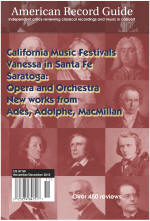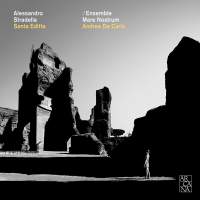Texte paru dans: / Appeared in: |
|
|
Outil de traduction ~ (Très approximatif) |
|
|
Reviewer: John
W. Barker
Only recently did I review a
premiere recording of one of Alessandro Stradella’s six Italian oratorios,
San Giovanni Crisostomo (M/A 2016). That was, in fact, the second volume in
what appears to be Arcana’s intention to record all of them with De Carlo
and his ensemble. The present release is the third. The subject of this
oratorio is Saint Edith of Wilton, an Anglo-Saxon princess who grew up in a
cloister and was determined to remain there, pursuing charitable devotion,
despite efforts to install her on the throne. (The oratorio’s awarding her
the title of “Queen of England” is a misrepresentation of that failed hope.)
As with Crisostomo, such subject matter is quite alien to Italian
liturgical practice. In this case efforts are made to connect the
composition with at least two possible political queenly personalities of
the day, as a topical commentary. There is no real action in the libretto by the Roman aristocratic poet Lelio Orsini. Instead, this is an example of what we might call the “debate-oratorio”, where a character has discussions with, or is argued over, by allegorical personifica-tions. Editta strenuously and unyieldingly defends her religious vocation against the arguments of Nobilita (Nobility, soprano), Grandezza (Grandeur, contralto),
Bellezza (Beauty, tenor), and
Senso (Sense, bass), with backing only by Umilita (Humility, soprano). The
score is the predictable procession of recitatives with arias (17 of them,
including ariosos), duets (4) and trios (4), invariably brief. Editta
herself is the clear protagonist, with 11 of the arias and 1 duet assigned
to her, as she answers the blandishments one by one.
soloists. Cangemi is the best
known of them, and her strong, fervid protestations are brought off
beautifully. The instrumental functions are taken over by seven players (two
gambas, cello, archlute, theorbo, harp, harpsichord). Full Italian text is printed, with translations. Not a great masterpiece, but an interesting transitional example of the genre. | |
|
|
|
|
Cliquez l'un ou l'autre
bouton pour découvrir bien d'autres critiques de CD |
|




